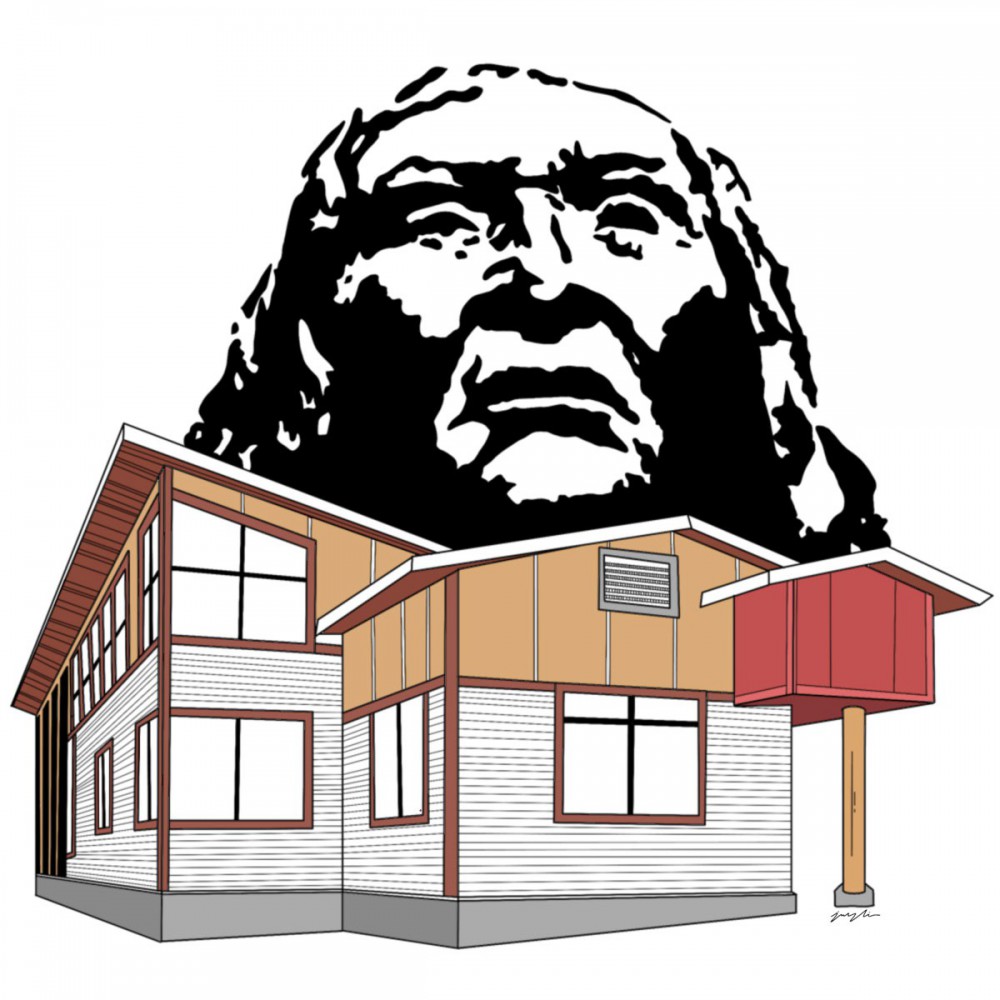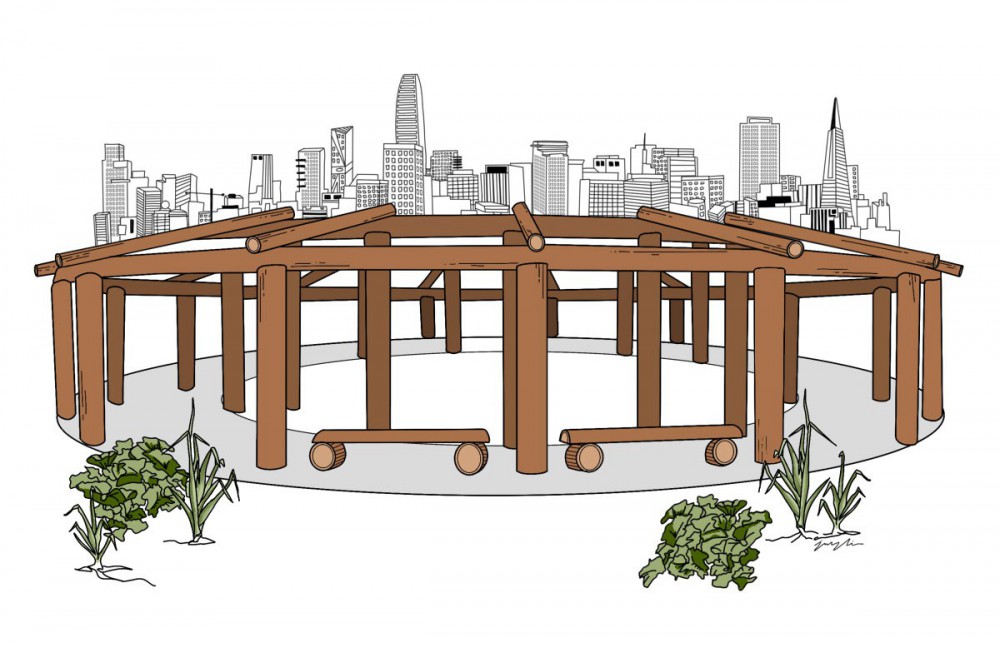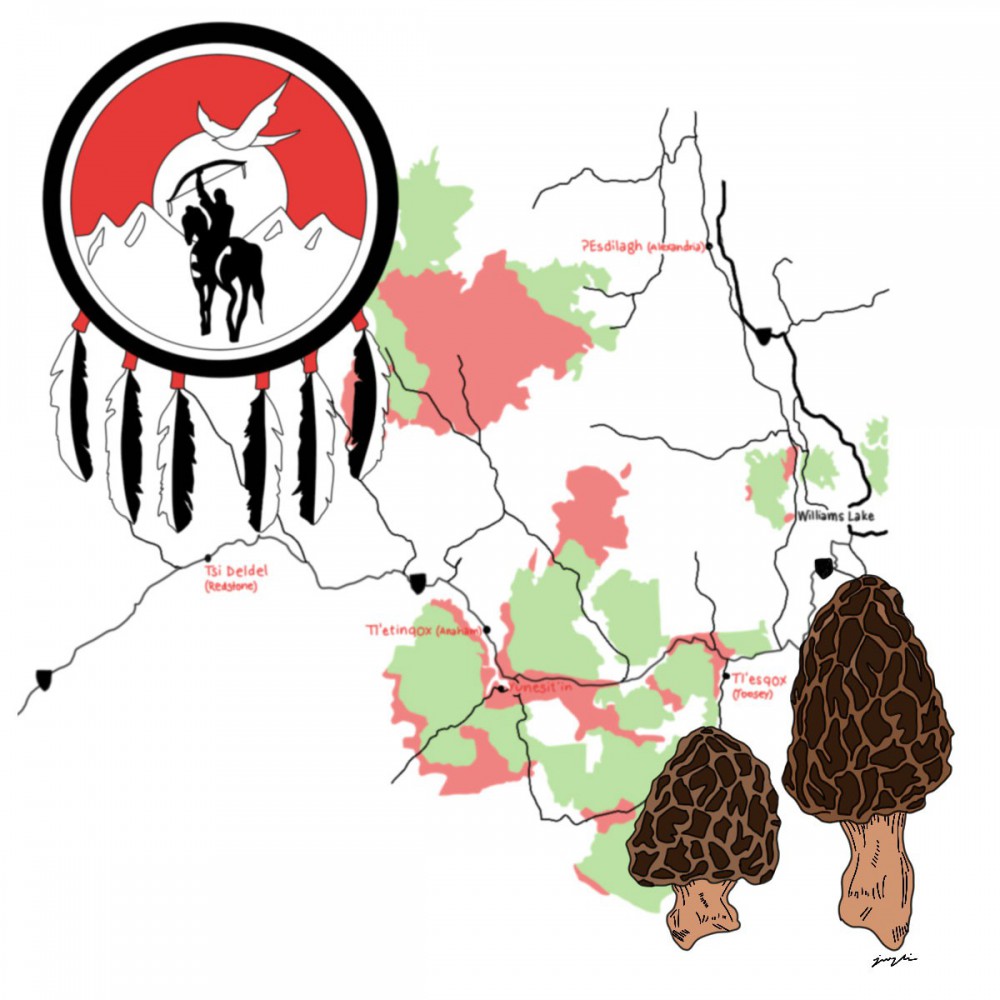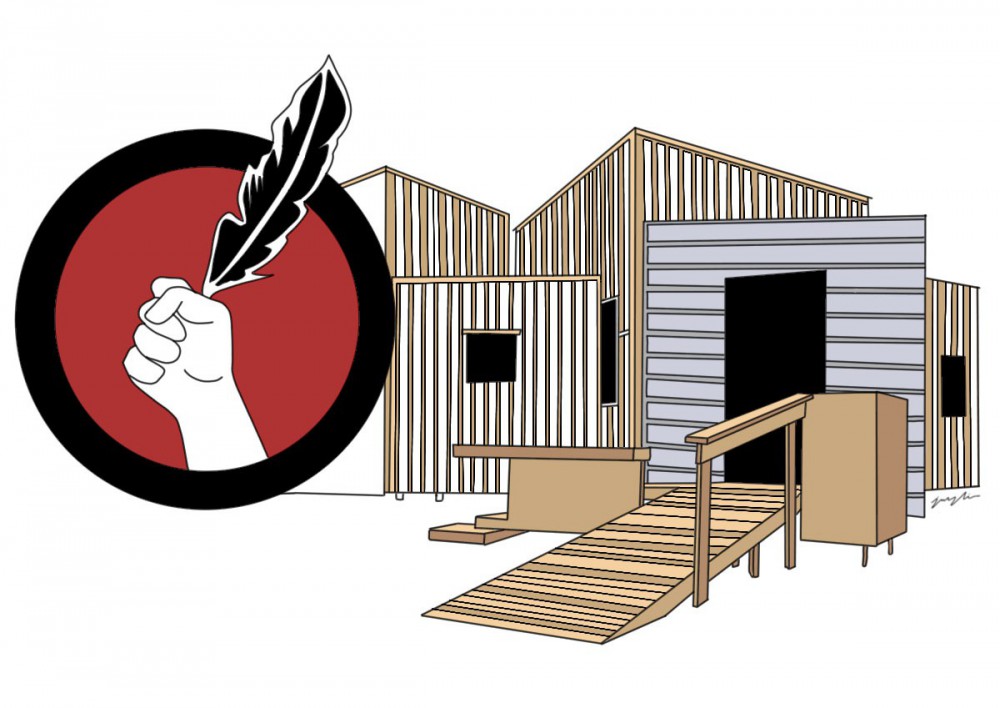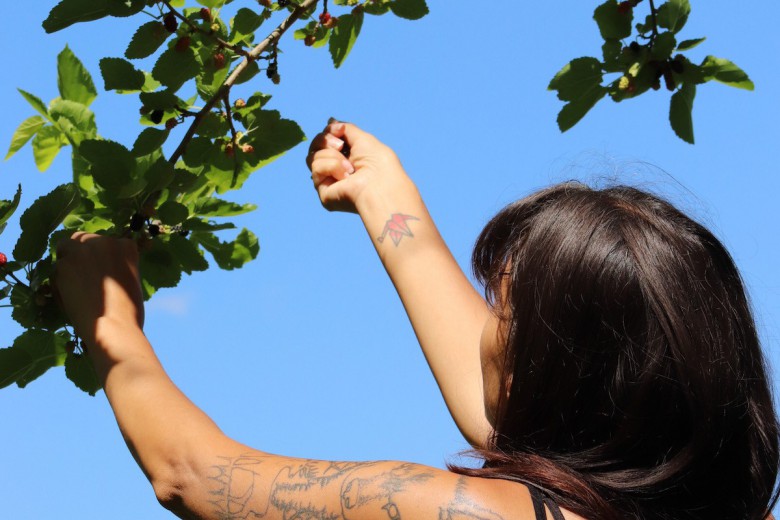Whenever I publicly talk about Land Back, someone will inevitably ask me the same question: “What does Land Back really mean?”
More often than not, I will answer with something short like, “it means give the land back.” As to-the-point as that answer is, I know it isn’t the answer they are necessarily looking for. The concept of Land Back, particularly for many non-Indigenous folks, can seem confusing and abstract. People want to know what is being done and what they can do to help the movement.
Indigenous people have always found ways to assert their jurisdiction despite their displacement and forced alienation from the land.
While it is only in the past couple of years that Land Back has entered national dialogues, Indigenous people have always found ways to assert their jurisdiction despite their displacement and forced alienation from the land. What’s more, some non-Indigenous people have acted as accomplices in the Land Back movement – finding ways to pay reparations and subvert the systems of oppression that have often benefited them, in the spirit of Land Back.
This piece explores four case studies to show concrete ways that Land Back is taking place on the ground. Hopefully these examples can provide some clarity about what Land Back means and looks like, perhaps functioning as a starting point for non-Indigenous people to join the Land Back movement and begin reconciling their relationship to these lands.
1. Paying rent
By Riley Yesno
One way non-Indigenous people are materially supporting the Land Back movement is by paying monthly or annual fees to the Indigenous people whose land they occupy. This can be done on an individual basis by setting up a relationship with an Indigenous community’s administration – like Hereditary Chiefs or a reserve band office – though these groups don’t always have structures in place to facilitate Land Back initiatives. In other cases, there are organizations that have been created for the purpose of facilitating action toward Land Back.
Real Rent Duwamish (RRD), created by the Duwamish Solidarity Group (DSG) in 2017, is one such project. DSG is a working group within Seattle’s Coalition of Anti-Racist Whites – it is, in their own words, “an effort to develop authentic relationships with Duwamish people and support them in ways they determine best achieve justice and community.”
Today, the Duwamish still do not have their promised land base and have been denied treaty rights, since the U.S. government does not recognize them as a tribe.
Real Rent Duwamish was created in partnership with the Duwamish Tribe – the first people of what is currently called Seattle and one of the signatories of the Treaty of Point Elliott. In 1855, the Duwamish “ceded” 54,000 acres of their homeland in exchange for hunting and fishing rights and guaranteed reservations. But a decade later, settlers petitioned to block the establishment of a Duwamish reservation near the city of Seattle. Today, the Duwamish still do not have their promised land base and have been denied treaty rights, since the U.S. government does not recognize them as a tribe. Real Rent Duwamish encourages non-Indigenous people living and/or working in Seattle to donate a self-determined sum of money every month as a form of restitution to the Duwamish people and as a way of adhering to the spirit of the Treaty of Point Elliott.
The Duwamish Solidarity Group suggests meaningful and sustainable amounts to donate – like $18.55 per month to symbolize the treaty of 1855. As of this writing, 7,319 people are active monthly donors or “rent payers.”
The Real Rent Duwamish project is entirely volunteer-run, so 100 per cent of the “rent” goes to the Duwamish Tribal Services, who – according to the RRD website – have used the income to support “social, educational, health, and cultural services,” including a free museum and community centre. The money is not controlled by the Duwamish Solidarity Group and is directly deposited to Duwamish Tribal Services once donations are made online. As the RRD website says, “our government hasn’t honoured the treaty, but WE can.”
2. Land trusts & taxes
By Riley Yesno
The Sogorea Te’ Land Trust was launched in 2015 by two Indigenous women: Corrina Gould and Johnella LaRose. A land trust is a non-profit organization that acquires land in order to help protect it; Sogorea Te’ is just one of many land trusts on Turtle Island that are returning land to Indigenous communities.
The Sogorea Te’ Land Trust is helping return Chochenyo and Karkin Ohlone lands in what is currently called San Francisco Bay back to Indigenous stewardship. The land trust aims to “acquire and preserve land, establish a cemetery to reinter stolen Ohlone ancestral remains and build a community center and round house so that current and future generations of Indigenous people can thrive in the Bay Area.”
Because they aren’t federally recognized tribes, Ohlone communities have no reservations or land base and are unable to collect certain taxes on their land. CounterPunch reports that the remains of thousands of Ohlone ancestors are currently warehoused at UC Berkeley and in museums in the Bay Area. Without land, the Ohlone people have nowhere to practise ceremonies, or reinter their ancestors.
The land trust encourages individuals and organizations to pay a voluntary “Shuumi Land Tax” (“shuumi” translates to “gift” in Chochenyo), which the land trust uses to buy parcels of land in the Bay Area. Suggested shuumi amounts increase based on the size of one’s home or the cost of one’s rent.
Without land, the Ohlone people have nowhere to practise ceremonies, or reinter their ancestors.
In 2016, with the help of over 900 investors and a community loan fund, the non-profit food sovereignty group Planting Justice took out a $600,000 loan to buy a two-acre plot of land in what is currently known as Oakland. Sogorea Te’ currently uses some of that land for ceremonies and cultural activities – but once Planting Justice pays off the loan, the entire plot of land will go to the land trust.
Though, like many Indigenous Peoples, Gould and LaRose don’t think land should be purchased or owned, they found that calling shuumi a “land tax” was a useful framing for non-Indigenous people who primarily understand land as property. “I think that people understand what that word ‘tax’ means,” Gould explained to KALW, a local public radio station in so-called San Francisco, “and I think they are willing to be able to participate in that kind of way.”
Contributing to land trusts is one of the most effective ways to return physical land to Indigenous Peoples. The Canadian federal government allows for First Nations to increase their reserve land base by adding land to an existing reserve or creating a new reserve – however, the process is slow and complicated. Alderville First Nation near Rice Lake, for example, has been in the process of applying for additions to their reserve lands since the 1980s.
Walpole Island First Nation near Sarnia established a land trust in 2008. It is the oldest known Indigenous-led land trust in what is currently called Canada, and it works on conserving land within the First Nation’s traditional and unceded territory.
3. Permits
By Riley Yesno
Land Back may not always look like returning physical land, though. It can also mean that Indigenous people are able to exercise their rights to self-government on their lands and enforce laws and regulations in ways they see fit.
The Tŝilhqot’in Nation is a great example of an Indigenous Nation asserting rights and jurisdiction over their land. The nation is comprised of six member communities located in so-called British Columbia. In 2014, the Tŝilhqot’in Nation’s inherent rights to self-governance were affirmed by the Supreme Court, and in 2018, the Tŝilhqot’in introduced regulations that required all non-Tŝilhqot’in people to acquire a permit in order to harvest morel mushrooms on their land.
The permits cost $20 for pickers and $500 for buyers. During the summer of 2018, each permit lasted 90 days and was only valid in designated mushroom harvesting areas; the other areas were reserved for use by the people in the community or for conservation. All proceeds from the permits went directly to “ensuring designated campsites are kept clean with adequate facilities.”
Tŝilhqot’in members were able to give feedback on what they saw happening on the land over the course of the harvesting season.
The regulations also included a “leave no trace” policy, where individuals who camp and harvest on Tŝilhqot’in lands must not damage or pollute the lands or waters, or they will have their permit revoked and face a fine. The Tŝilhqot’in used their own community-based governance structures to make these decisions in regard to their territories (though for education and enforcement of the regulations, they had help from Canadian conservation officers, natural resource officers, and the RCMP). In addition, Tŝilhqot’in members were able to give feedback on what they saw happening on the land over the course of the harvesting season.
“The management of the mushroom season was a step in the right direction,” said Chief Joe Alphonse, tribal chairman of the Tŝilhqot’in National Government in a media release following the 2018 harvesting season. The release added that the Tŝilhqot’in were not only asserting their jurisdiction and protecting their nen (land) and tu (water), but that the people in their communities saw real economic benefit from the initiative. Revenue from the permits has allowed for the nation to award contracts to local companies to build outhouses and garbage bins. At an individual level, many Tŝilhqot’in members bought and sold mushrooms, bringing another source of income into their households.
4. Housing
By Xicotencatl Maher Lopez
Land Back means being able to live safely and well on the land, considering the needs of both present-day people and generations to come. But on and off reserves, housing for Indigenous people is often overcrowded, poorly maintained, and built from shoddy materials. A 2014 study shows that in some Canadian cities, over 90 per cent of those living on the streets are Indigenous. But many Indigenous communities are fighting this crisis by taking housing into their own hands. One example is the One House Many Nations (OHMN) project.
Started by Idle No More, the One House Many Nations campaign both “raises awareness about housing conditions and pressures governments to live up to their Treaty, moral, and legal responsibilities, in addition to providing homes,” according to the Idle No More website. The campaign started by building one small house in Big River First Nation, after which people came together to do community design workshops in the Opaskwayak Cree Nation. At an international design competition in 2017, prototype plans and a demonstration model home won the top prize – and the model became the first OHMN house in the Opaskwayak Cree Nation.
The same people who will live in the houses are involved in designing and building them – training and creating jobs for local residents.
Since then, OHMN has continued to design and work toward constructing a village of homes in Opaskwayak Cree Nation and elsewhere. They aim to make the energy-efficient small homes and portable units, known as the Muskrat Huts, with locally-sourced sustainable building materials. The same people who will live in the houses are involved in designing and building them – training and creating jobs for local residents.
Houses are not just a place to live – they are places to cook, organize, share language, and pass on community knowledge. In many cases – like that of the Tiny House Warriors, a group of Indigenous land defenders building tiny solar-powered houses on unceded Secwepemc territory to halt the construction of the Trans Mountain pipeline – building and enforcing sovereignty over housing is a way for Indigenous Peoples to refuse displacement and erasure from ancestral lands by resource extraction or colonial policies.
This story was financially supported by a bursary from the Journalists for Human Rights’ Indigenous Reporters Program.



